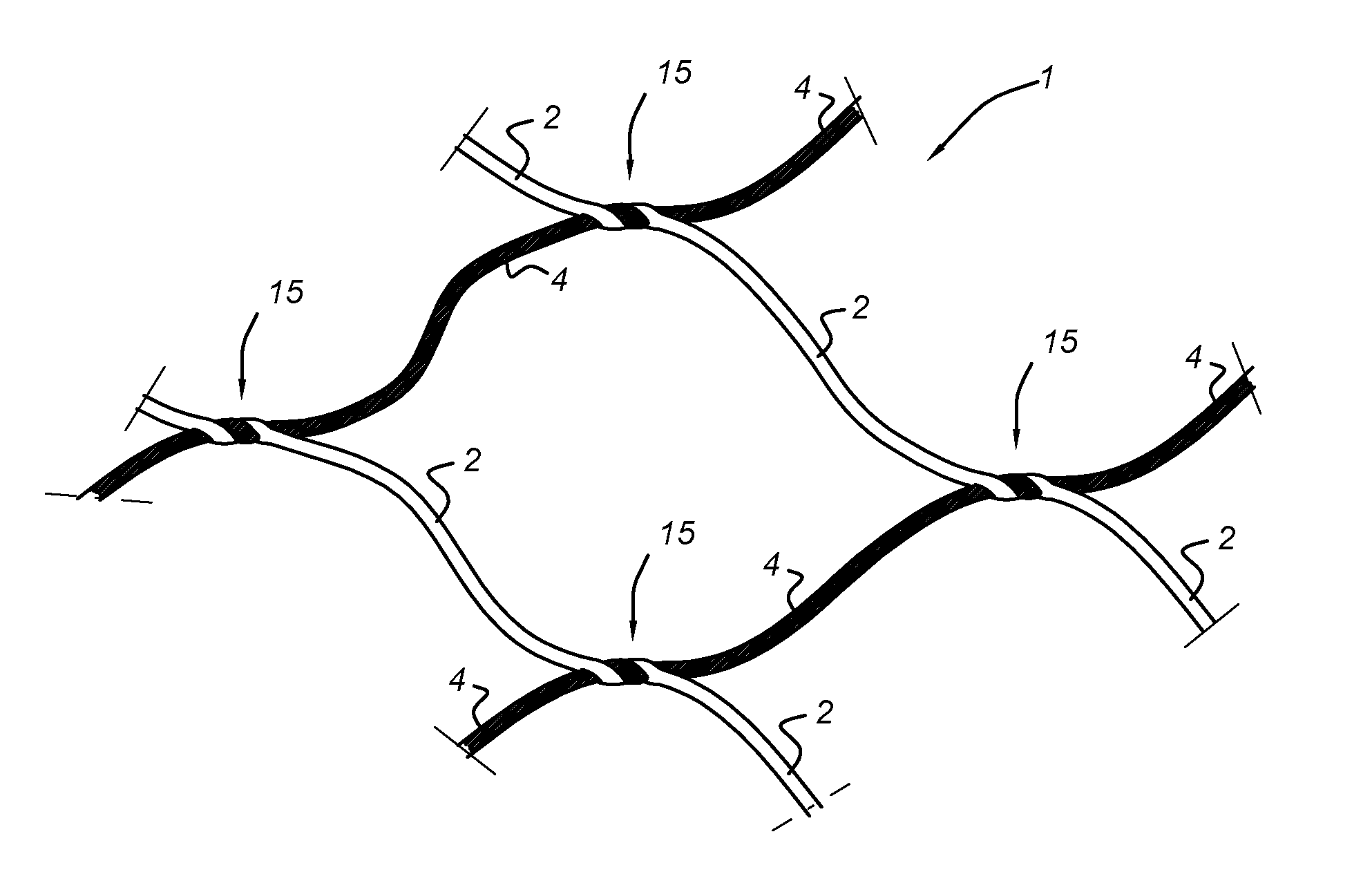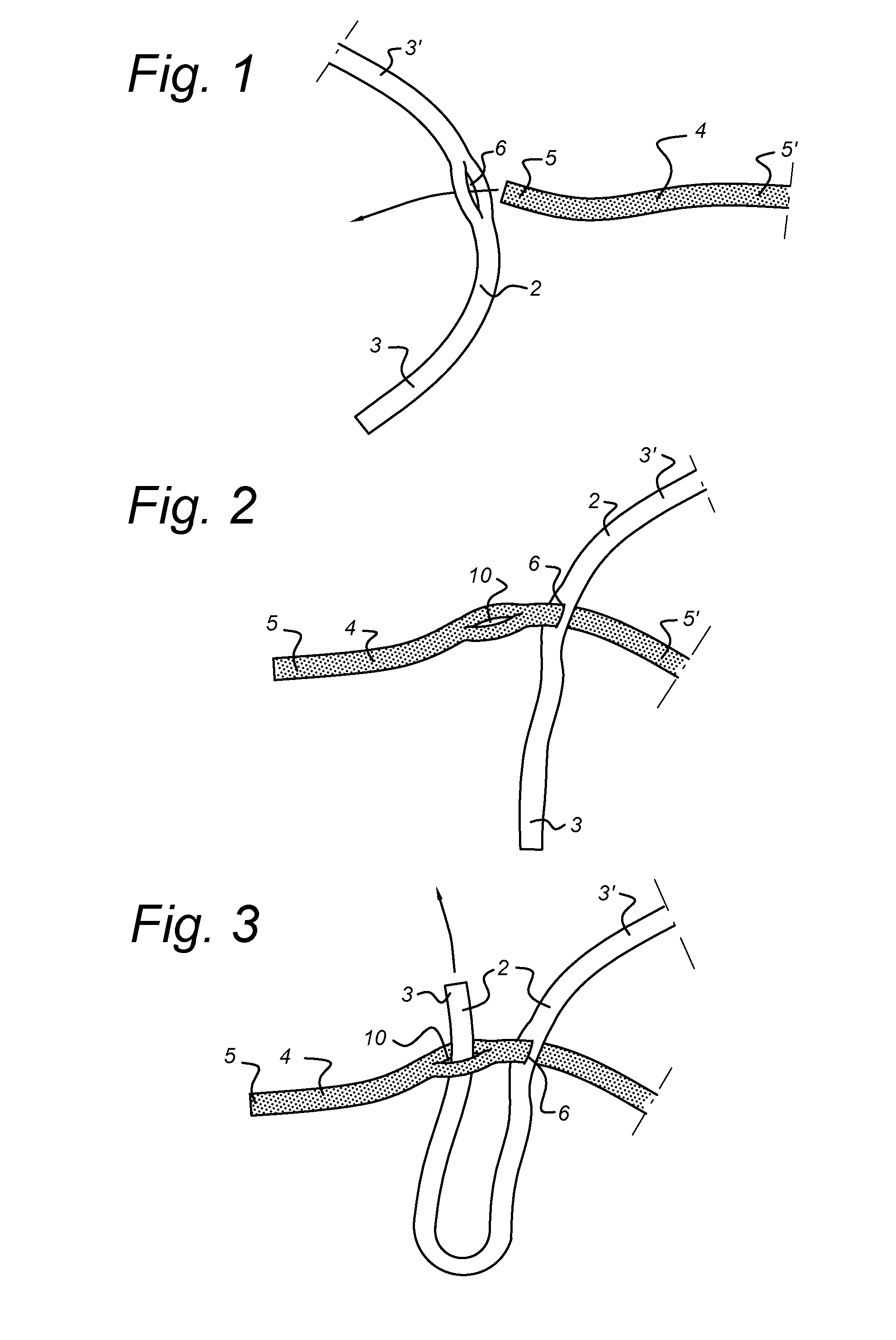Net and a method of making the same
a technology of nets and knots, applied in the field of nets, can solve the problems of reducing the performance of the net, reducing the survival probability of escaped fish, and possible damage and other unpredictable effects, and achieve the effect of stable and compact knots, adding stability and strength
- Summary
- Abstract
- Description
- Claims
- Application Information
AI Technical Summary
Benefits of technology
Problems solved by technology
Method used
Image
Examples
Embodiment Construction
[0074]FIGS. 1-6 show different steps for forming a knot according to an embodiment.
[0075]FIG. 1 shows a first rope 2 and a second rope 4. The first and second ropes 2, 4 are used to form a net. The net 1 may be a marine net, in particular a fishing net, a recreational net (sports net, playground net), an industrial net (cargo net, safety net) or any other type of net.
[0076]The net 1 may of course comprise more ropes, although these are not shown in FIG. 1. The net 1 may also comprise a frame to which the edges of the net 1 are attached.
[0077]The first rope 2 has a free end 3 and the second rope has a free end 5. The other ends (referred to as 3′, 5′ in the figures) are shown schematically, as it will be understood that these parts of said ropes may already be fixed to other previously formed knots or may be attached to a frame.
[0078]The first and second rope 2, 4, each may be of a twisted, braided, or woven construction, formed by at least 2 strands, for instance having 2, 3, 4, 6, ...
PUM
 Login to View More
Login to View More Abstract
Description
Claims
Application Information
 Login to View More
Login to View More - R&D
- Intellectual Property
- Life Sciences
- Materials
- Tech Scout
- Unparalleled Data Quality
- Higher Quality Content
- 60% Fewer Hallucinations
Browse by: Latest US Patents, China's latest patents, Technical Efficacy Thesaurus, Application Domain, Technology Topic, Popular Technical Reports.
© 2025 PatSnap. All rights reserved.Legal|Privacy policy|Modern Slavery Act Transparency Statement|Sitemap|About US| Contact US: help@patsnap.com



